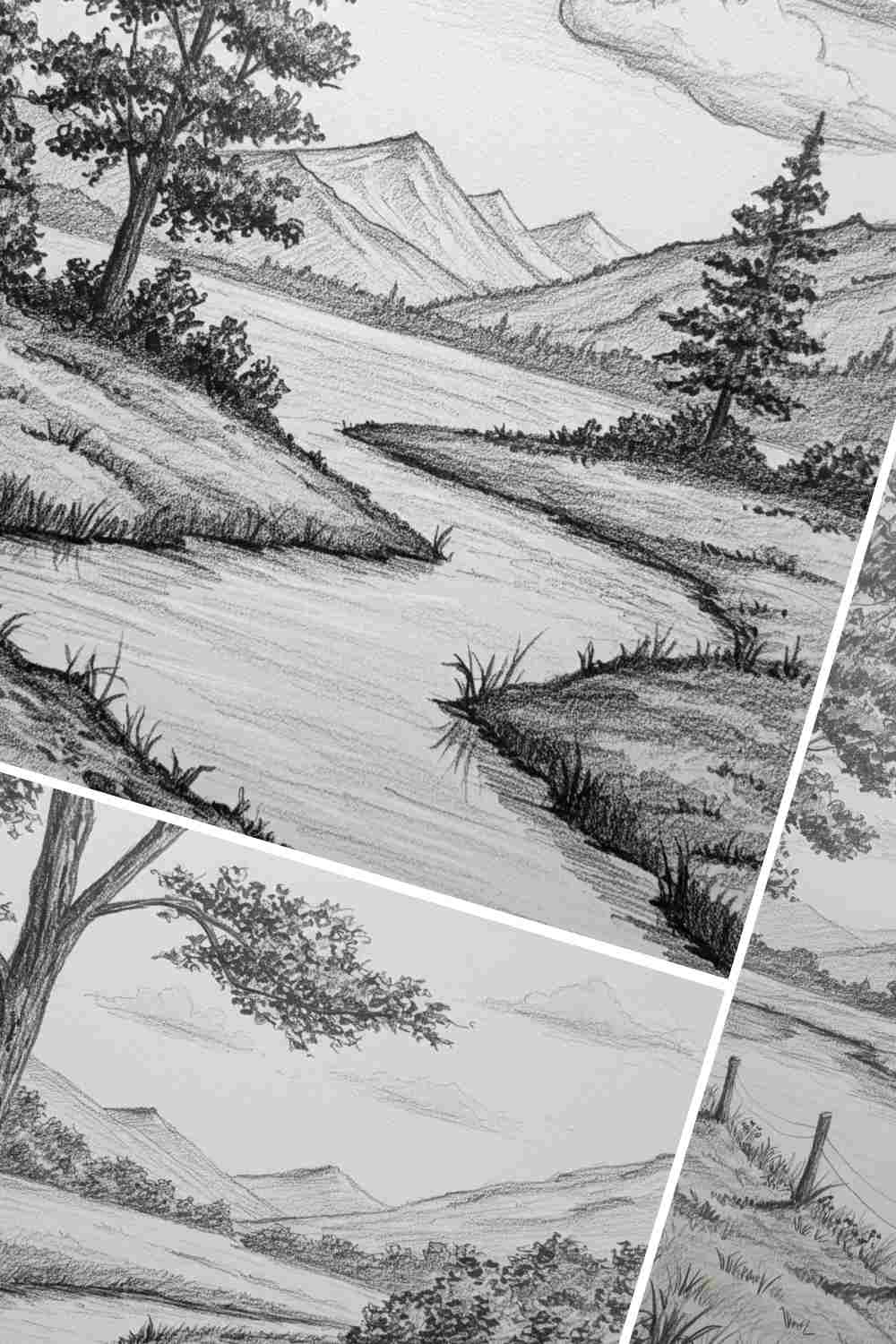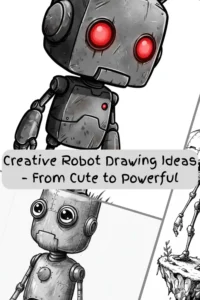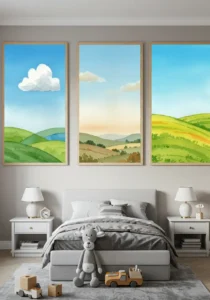Scenery sketching is a fun art that lets artists show nature, cities, and dreams. It makes artists better at seeing and arranging things.
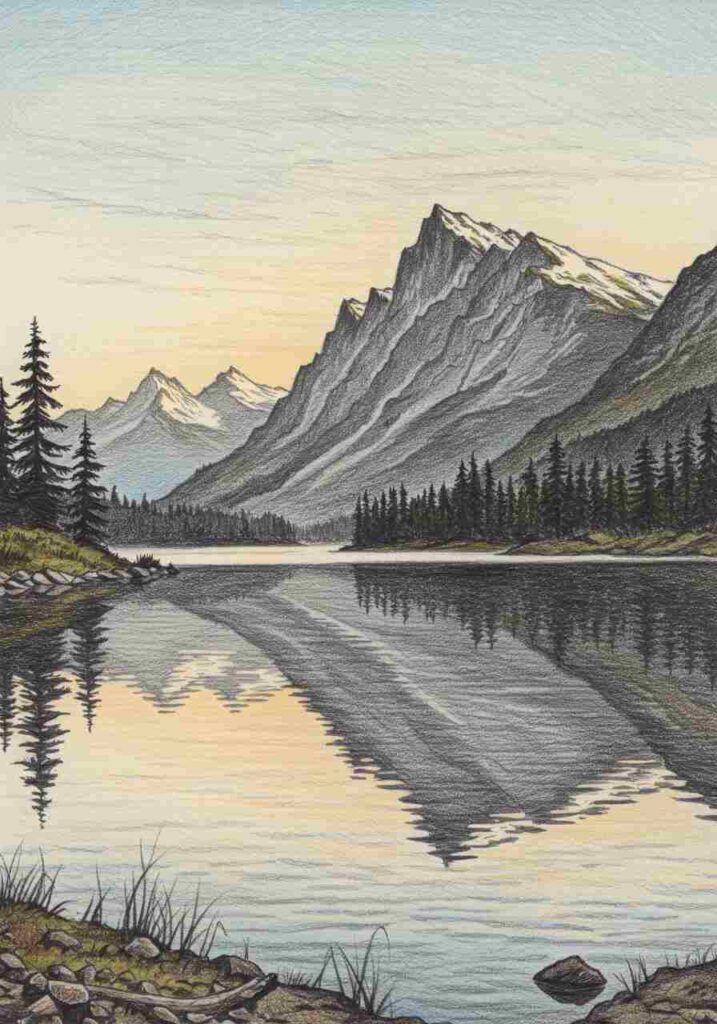
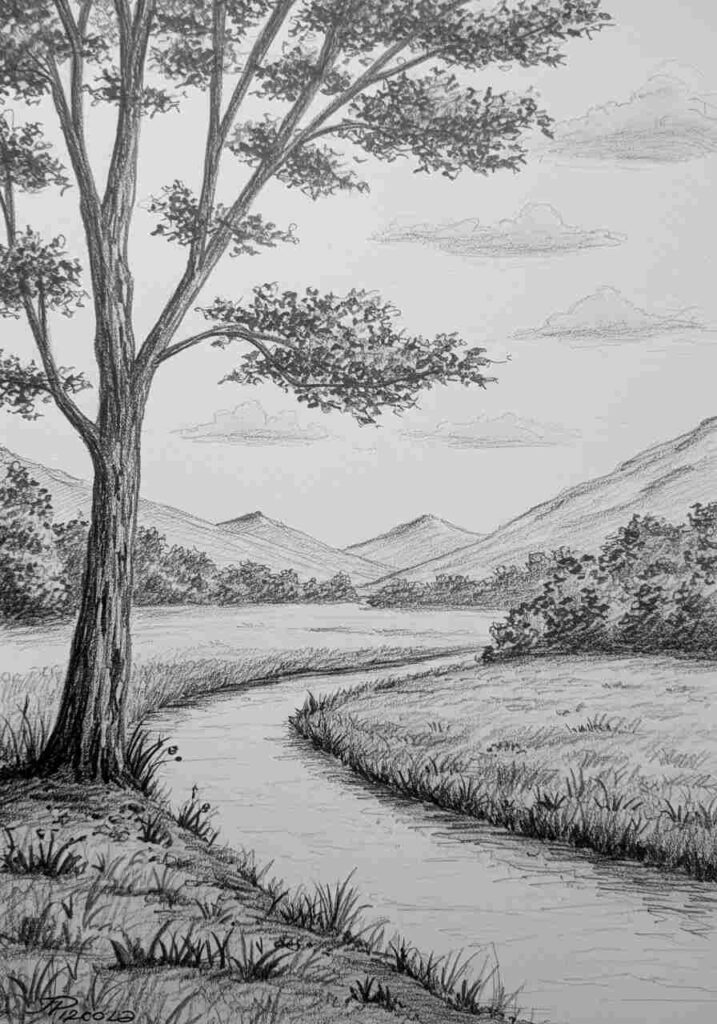
Artists use sketching pencils and graphite pencils to make their drawings look real. It’s great for both new and old artists. Scenery sketching lets you keep getting better and be creative.
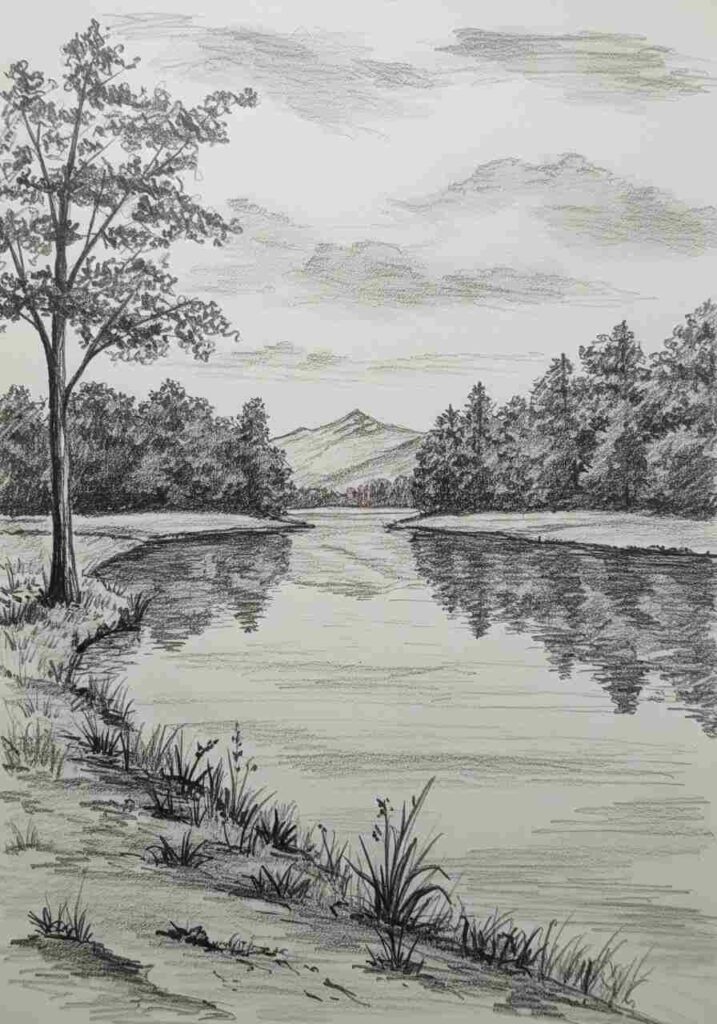
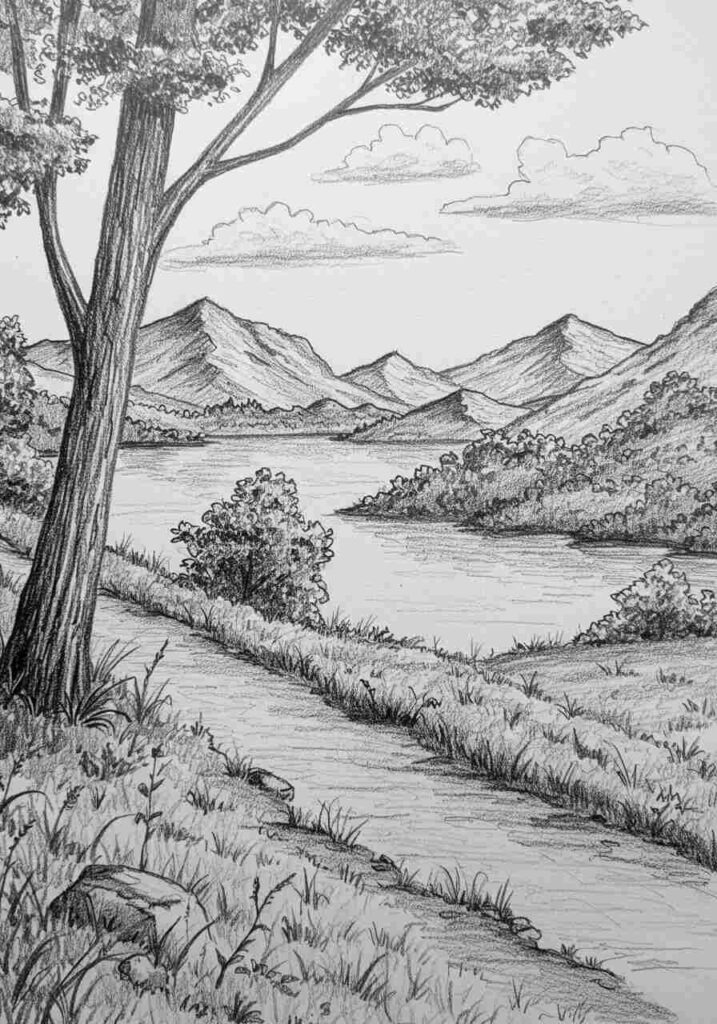
Key Takeaways
- Scenery sketching enhances observational skills and creativity.
- It allows artists to experiment with composition and perspective.
- Using sketching and graphite pencils can achieve varied tones and textures.
- Scenery sketching is beneficial for both beginners and experienced artists.
- It provides endless opportunities for skill refinement and creative expression.
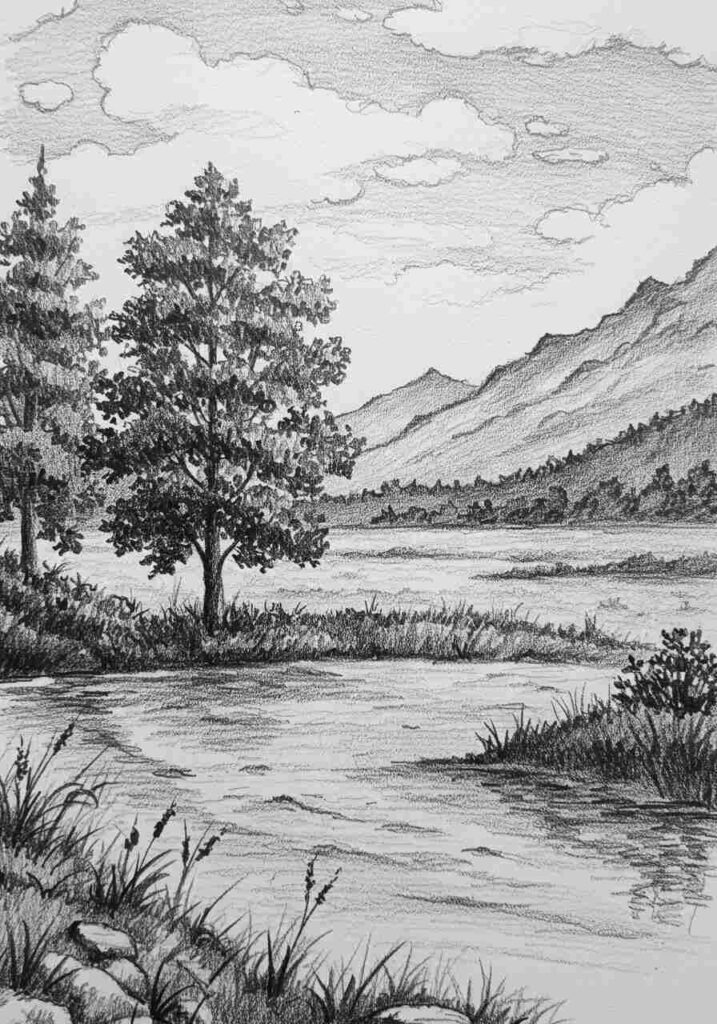
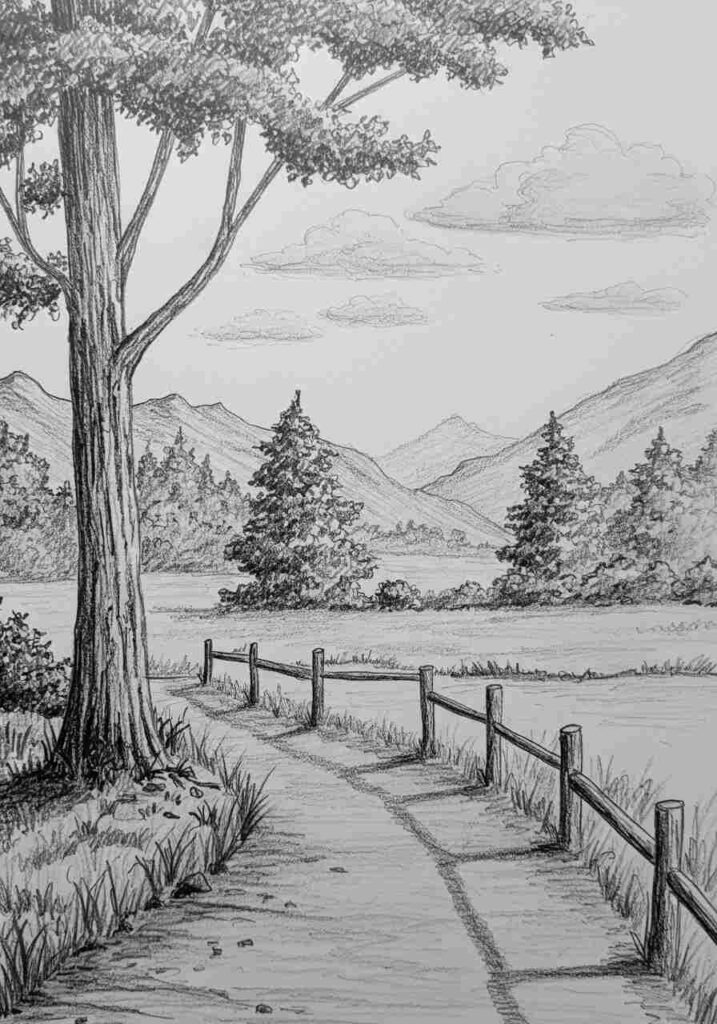
Essential Tools for Landscape Sketching
Landscape sketching needs the right tools. The right ones help capture a landscape’s essence.
Selecting the Right Pencils for Different Effects
Graphite pencils are great for shading and details. Charcoal is best for bold lines. Conte crayons mix both, offering many tones.
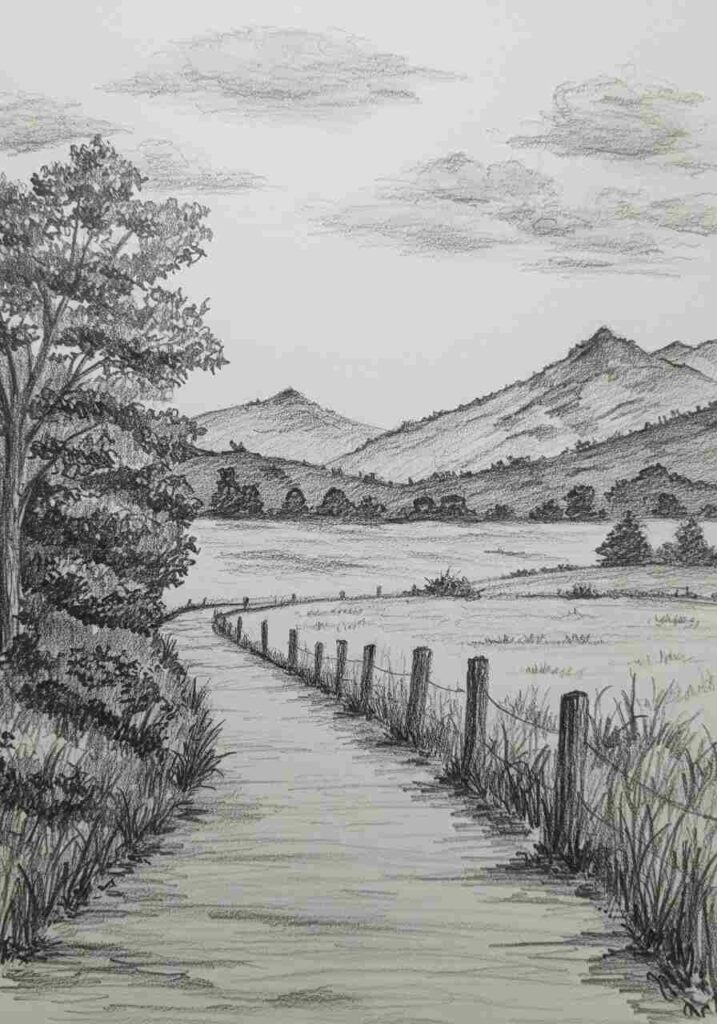
Choosing Sketchbooks and Paper Types
Choosing the right sketchbook and paper is key. Look for smooth, durable paper for different drawing styles.
Erasers and Blending Tools for Texture
Erasers fix mistakes and add highlights. Tools like tortillon or blending stumps create smooth textures.
Fundamental Techniques for Landscape Drawing
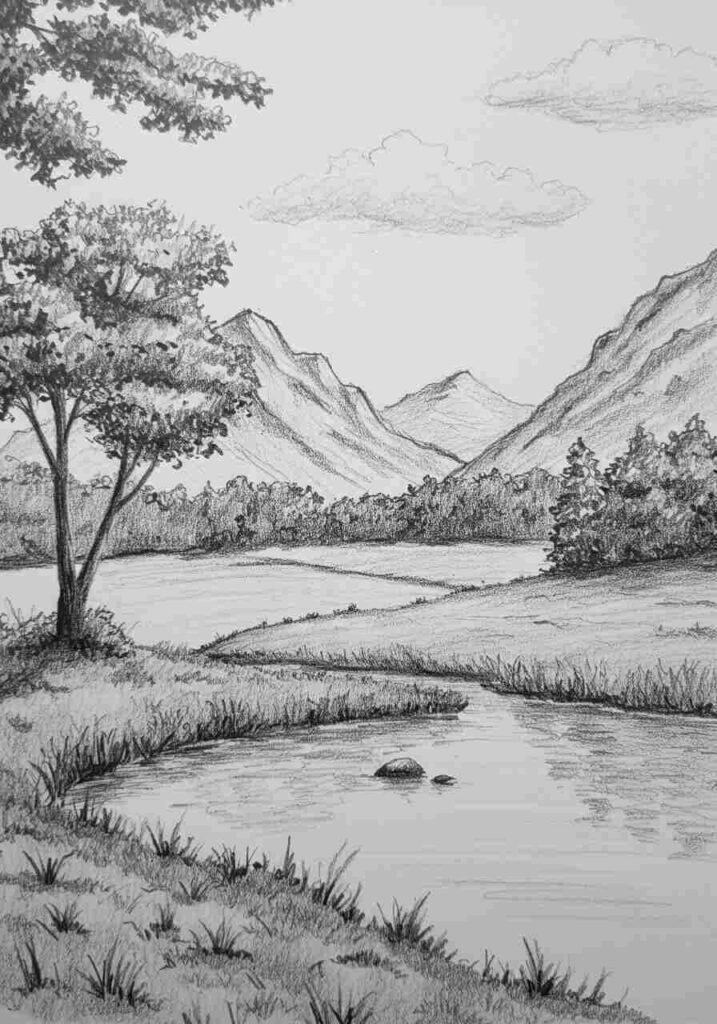
Good landscape drawing needs skills like making things look deep, playing with light, and paying close attention. Artists must know and use key techniques to make their sketches stand out.
Creating Depth and Perspective in Nature Scenes
It’s important to make scenes look deep and real. Artists use tricks like overlapping objects, atmospheric perspective, and converging lines. These help make the scene feel alive and real.
Mastering Light and Shadow Effects
Light and shadow are key in landscape drawing. They make scenes look more real and interesting. Artists should learn about light and practice shading techniques like hatching and blending. This makes their landscapes look better.
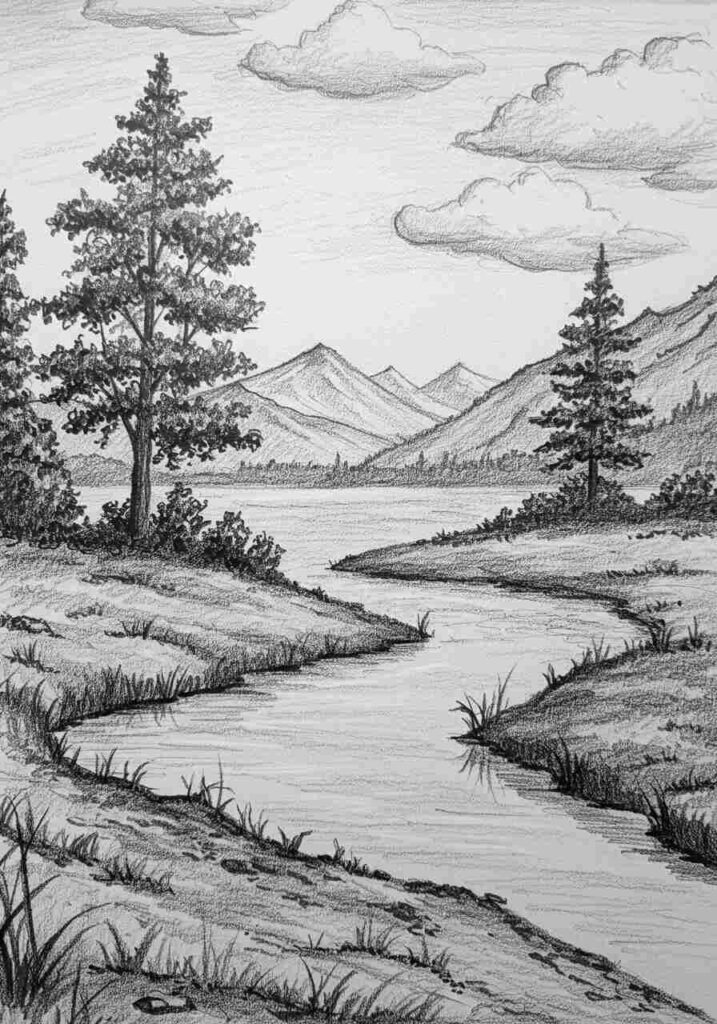
Observational Drawing Practice for Realistic Landscapes
Being good at observational drawing is important for realistic landscapes. Regular practice helps artists get better at showing the world accurately. They learn to capture shapes, textures, and colors well.
| Technique | Description | Effect |
|---|---|---|
| Overlapping Objects | Placing objects in front of others to create depth | Creates a sense of layering |
| Atmospheric Perspective | Fading objects into the background to convey distance | Enhances depth perception |
| Hatching and Cross-Hatching | Using closely spaced parallel lines to create shading and texture | Adds dimension and detail |
Creative Ideas for Drawing Landscapes with a Pencil
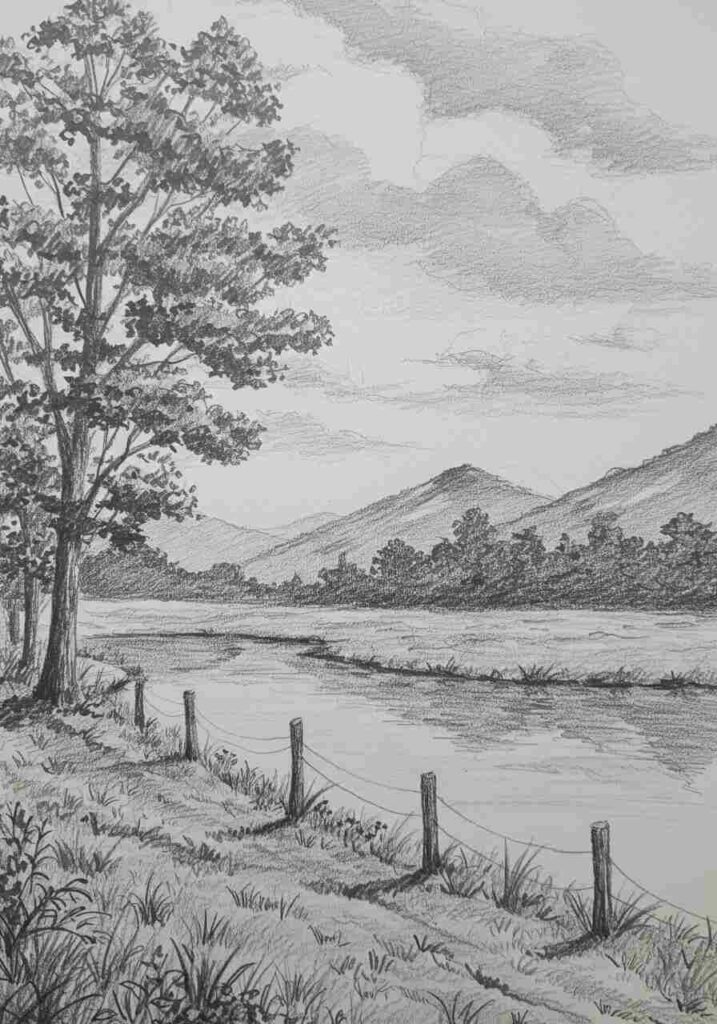
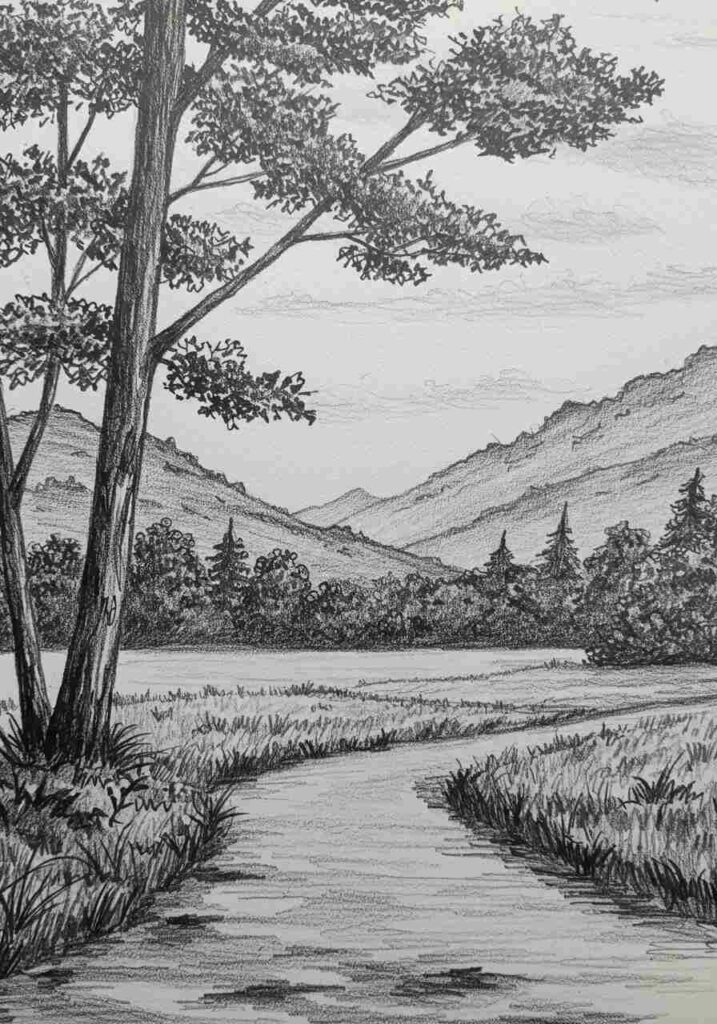
Drawing landscapes with a pencil is fun and creative. It lets artists show their skills in many ways.
Mountain and valley scenes are very interesting to draw. They have big mountains and calm valleys. Artists use soft shading for mist and sharp lines for mountains.
Mountain and Valley Scenes
Mountain drawings can be realistic or abstract. Artists can focus on rock textures, light on snow, or valley curves.
Water Features: Lakes, Rivers, and Oceans
Water features are also great to draw. Lakes, rivers, and oceans show reflections and water movement. Artists can make their drawings calm and deep.
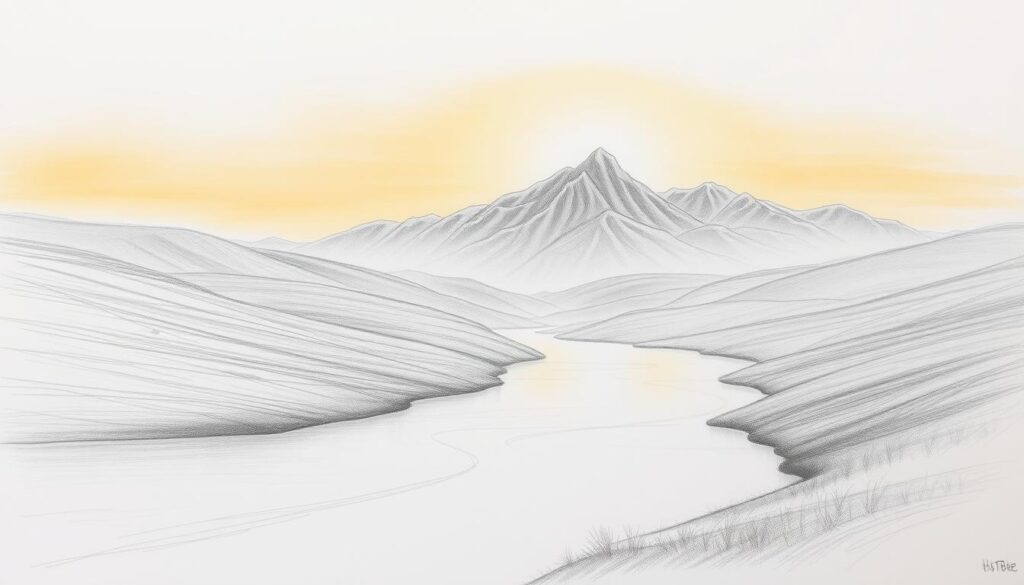
Forest and Woodland Compositions
Forest and woodland compositions are full of textures and shapes. Artists can draw tree bark, soft leaves, and light through trees. These scenes make you feel like you’re in nature.
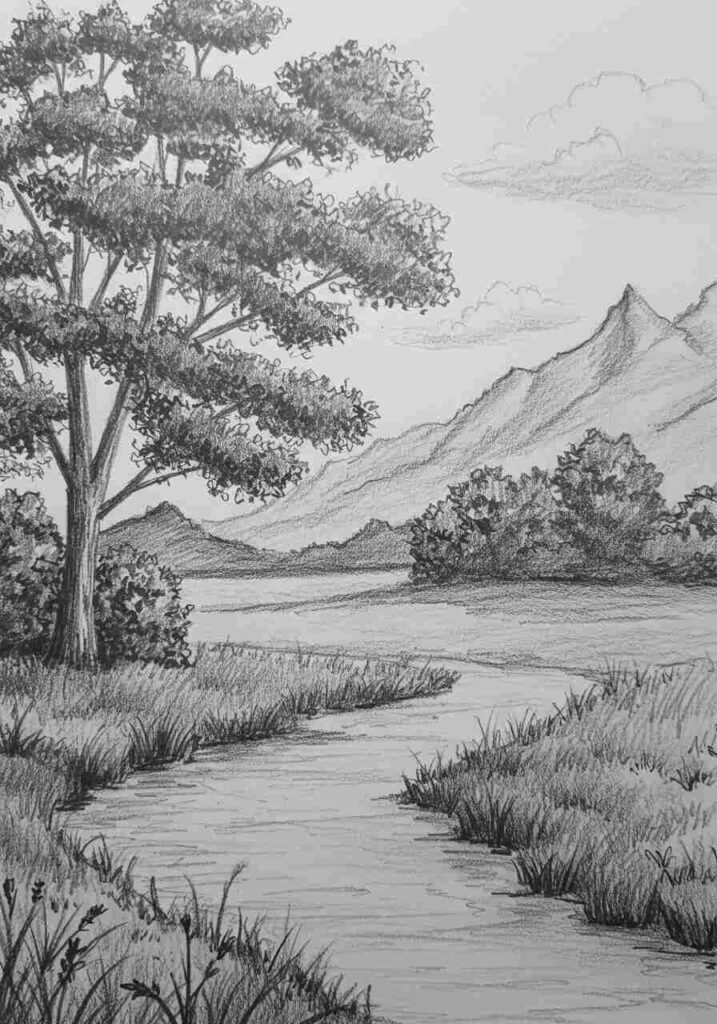
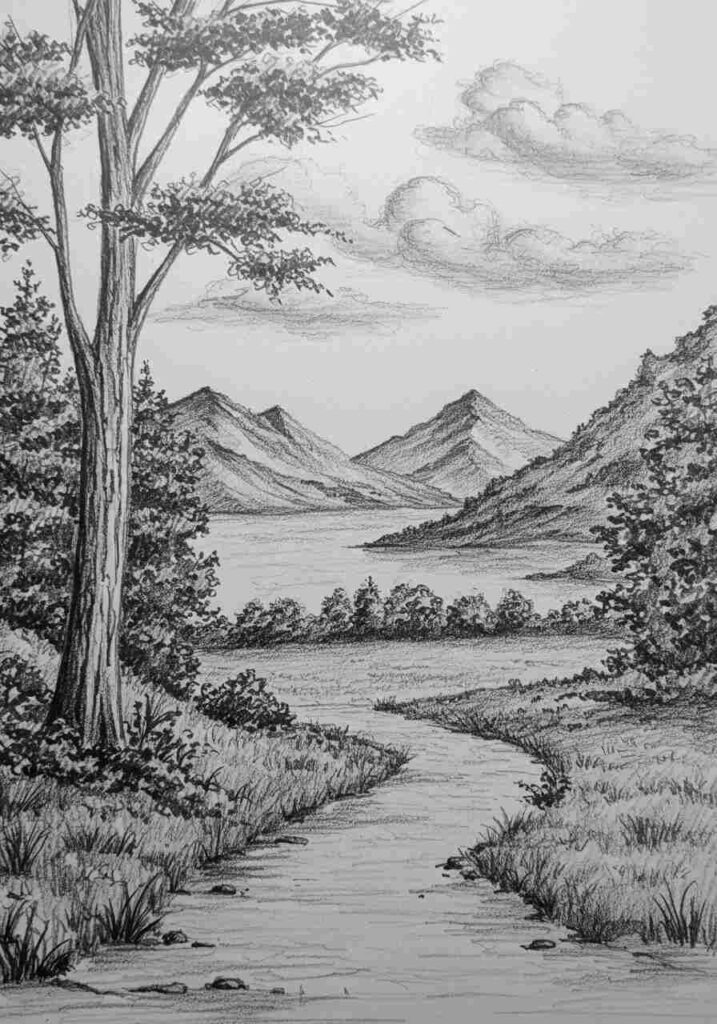
Urban and Architectural Landscapes
Urban and architectural landscapes are different. They need to show building shapes, street life, and light on buildings. This lets artists show how people and nature meet.
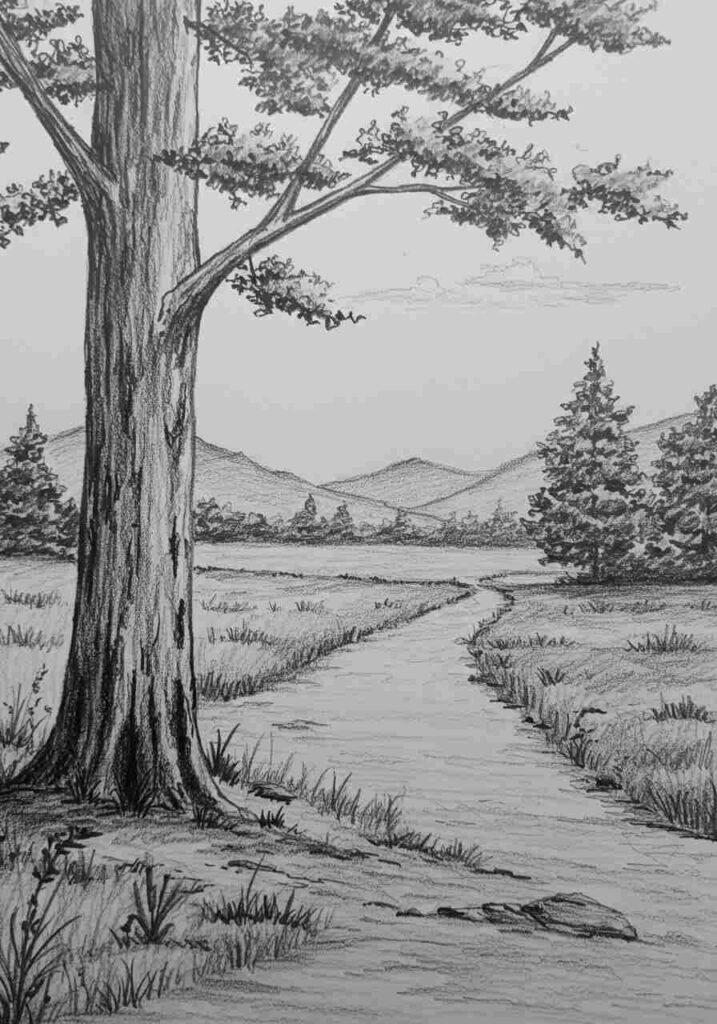
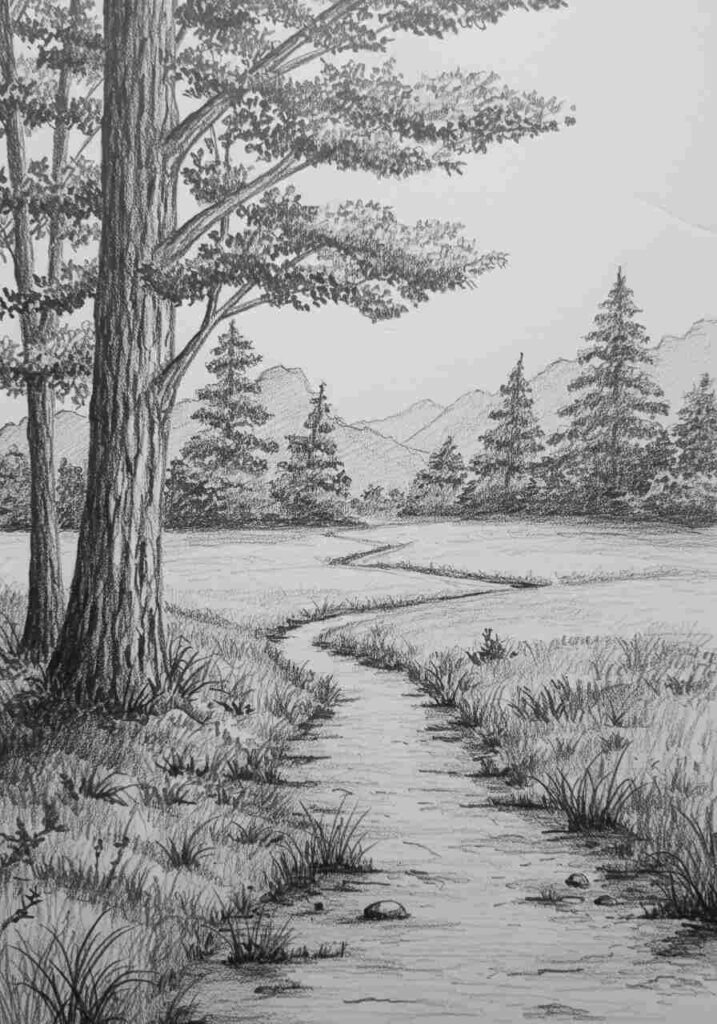
Exploring these themes helps artists find their own style. They can draw peaceful nature or busy cities.
Conclusion: Developing Your Unique Landscape Style
As you keep practicing scenery sketching, your art will grow. It will show your personal style and how you see the world. It’s a journey that lets you share your creativity.
Try new things like different pencil strokes and shading. This will help you capture the beauty of nature. Your style will grow as you get better, making your scenes more detailed.
Keep learning and trying new ways to draw. This will help you make landscapes that show your vision. Your unique style will show who you are as an artist.
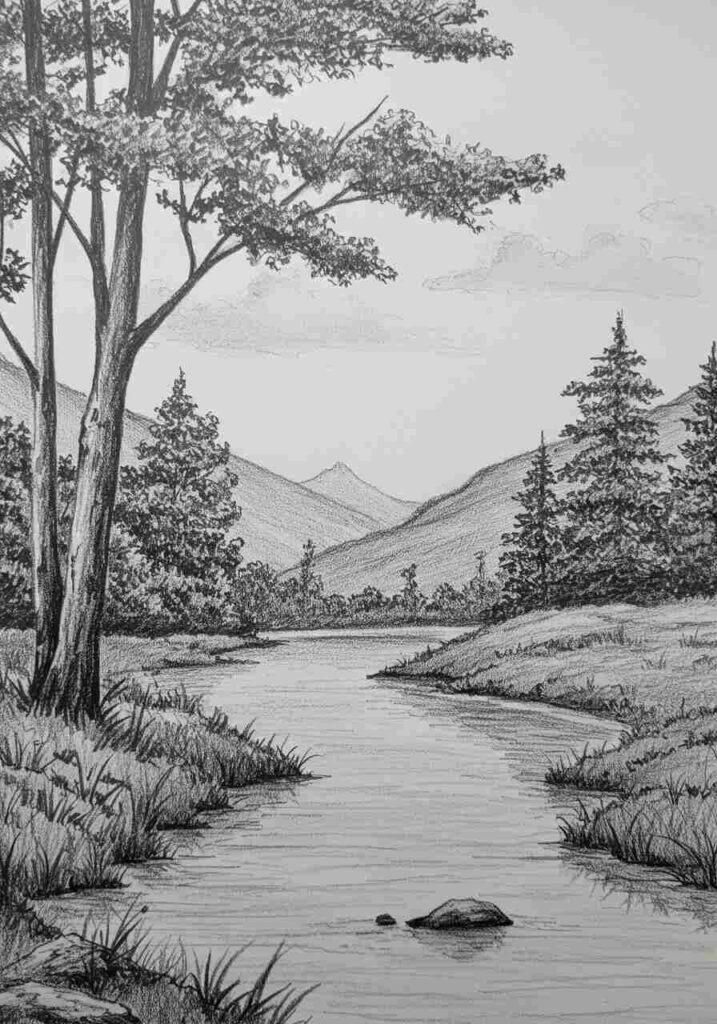
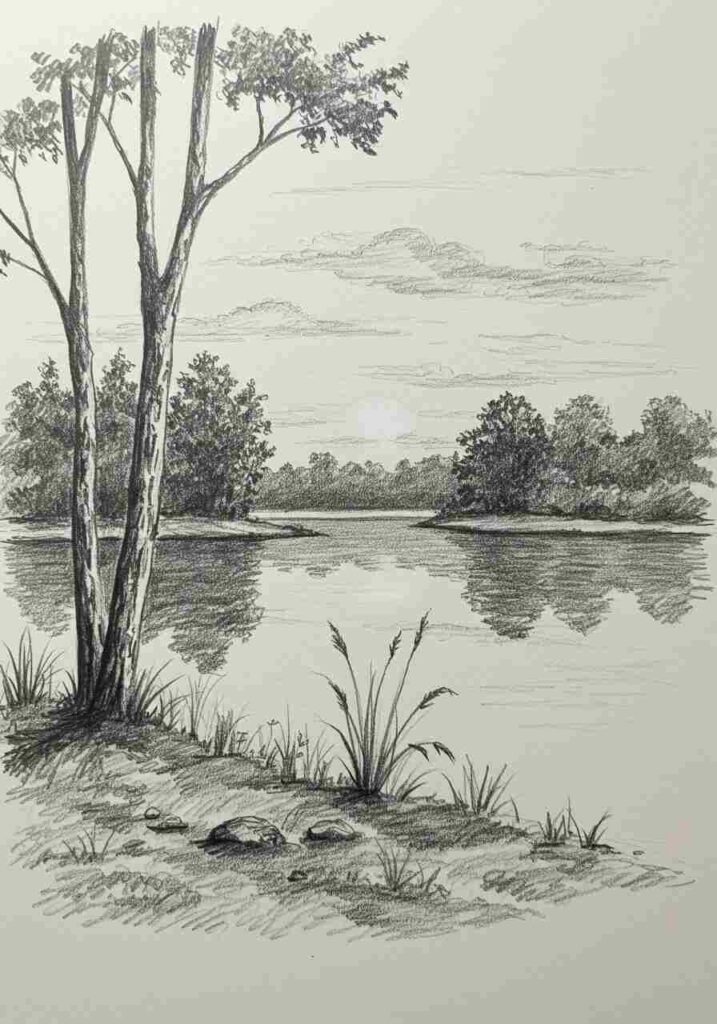
FAQ
What are the best pencils for scenery sketching?
Graphite pencils are top picks for scenery sketches. They range from soft (B) for deep shading to hard (H) for fine details. Pencils like 2B, 4B, and 6B help create depth and contrast.
What type of paper is best for sketching landscapes?
Smooth paper is perfect for fine details. Textured paper is great for rough, expressive strokes. Toned paper adds highlights with white pencils or ink, making your sketch unique.
How can I improve my observational drawing skills?
Practice by drawing from real life. Go outside and find an interesting scene. Sketch what you see. This helps you understand depth, perspective, and natural elements.
What techniques can I use to create depth in my scenery sketches?
Understanding light and shadow is crucial for depth. Study how light falls on surfaces. Practice shading with hatching, cross-hatching, and blending for realistic effects.
Can I use charcoal or conte crayons for scenery sketching?
Yes, charcoal and conte crayons are great for bold lines and rich textures. They allow for deep shadows and dramatic contrasts.
How can I add sharpness and permanence to my sketches?
Ink sketching adds sharpness and permanence. Use fine-liner pens, brush pens, or fountain pens for stunning details and intricate lines.
